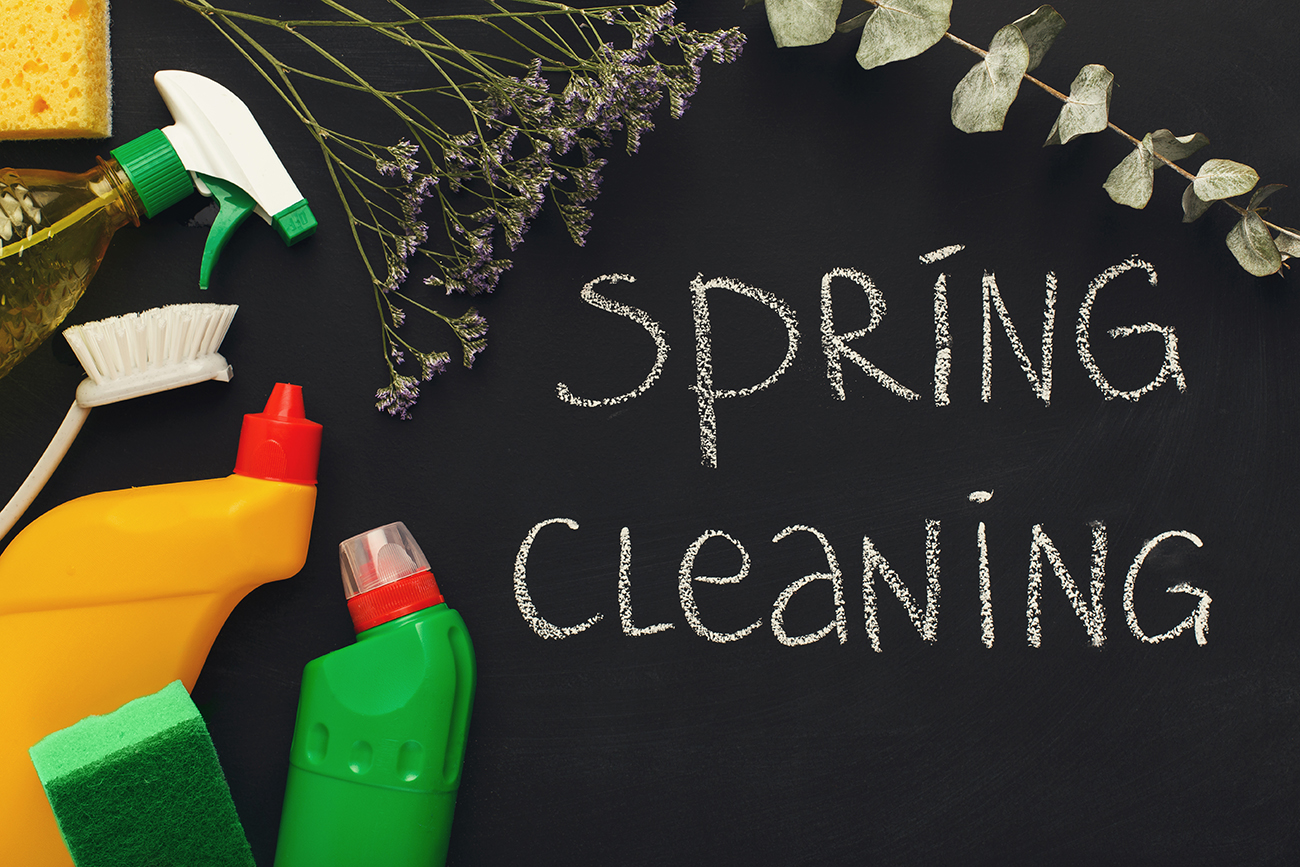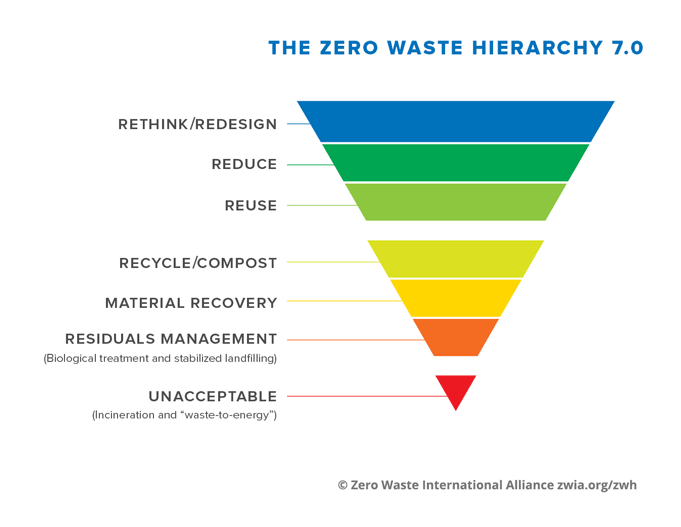All Divisions of Recycle Ann Arbor will be closed on Friday, July 4th. Friday's Curbside Pick-Up recycling will instead take place the following day on Saturday, July 5.

Spring Cleaning - The right way to get rid of your things and green cleaning
April 13th, 2021
Spring is a time of reawakening with the emerging critters and plants and even in our own lives. This sense of refreshment often inspires people to become more active, and you know what that means - household spring cleaning and purging are underway! In this article, we’ll guide you through ways to purge items from your home while keeping zero waste in mind and how to tackle spring cleaning with some green cleaning tips.
Tip: You can always use the Zero Waste Hierarchy below as a tool to guide you in your decision making.

The Clean-Out
Whether you are working on purging your garage or your wardrobe, here are a few steps to make the process easier while keeping zero waste in mind!
- Make a pile or a list of all of the items you are considering getting rid of.
- Ask yourself why you might get rid of these items (broken, don’t use it, don’t like it, etc.)
- Identify items that are clean and in good condition.
- Identify items that are broken but could potentially be repaired.
- Identify items that you do not think are able to be reused anymore.
- Organize into categories of keep, donate, and recycle.
Anything that you determine is in good condition and clean but you truly won’t use, please donate it to a local thrift store so your “trash” can become someone else’s treasure! We are fortunate to have a diverse network of thrift stores throughout our community. Check out the local reuse network to find locations for reuse.
For items that are not in good enough condition to be donated or repaired, check if they can be recycled. You can use our searchable A-Z Recycling Guide to see if an item is accepted for curbside recycling, at our Drop-Off Station, or the Recovery Yard.
The Clean-Up
First things first - You can reduce waste by checking the cleaning supplies you already have instead of buying unnecessary new ones.
TIP: Use rags, microfiber cloths, and cut up old t-shirts instead of disposable paper towel for cleaning.
If you determine that you have cleaning supplies you need to dispose of, you can bring them to the Washtenaw County Household Hazardous Waste collection program for proper disposal if you are a resident of Washtenaw County. They accept all household cleaners through their program in an effort to reduce water pollution.
Often, it is not necessary to use a special cleaner for each type of surface. An all-purpose cleaner can effectively clean multiple surfaces and minimize the amount of packaging and disposable plastic waste. Alternatively, you can make your own cleaning solutions by using basic household items, that you may already have in your pantry. It is important to test any new cleaning solution on a small area first.
Here are a few cleaning recipes to get you started:
All-purpose cleaner
2-ingredient recipe:
Mix equal parts water and distilled white vinegar in a spray bottle. For a 1 cup solution, add 10-15 drops off an essential oil (tea tree, lemon, and orange essential oils are great!) Be careful using vinegar on marble and granite because the acidity of the vinegar can cause it to eat away at the surface.
Don't like the smell of vinegar? Fortunately, the smell dissipates fairly quickly and you can expedite that process by opening windows and/or turning on a fan. Adding essential oils to your solutions also helps.
No vinegar all-purpose recipe:
Put 1 teaspoon borax and ¼-½ teaspoon of washing soda in a spray bottle. Add 8 oz. of hot water. Shake to dissolve. Add ¼ teaspoon liquid castile soap. Optional - add 10 drops of essential oil.
Toilet bowl cleaner
Sprinkle ½ cup of baking soda into your toilet. Pour 1 cup of distilled white vinegar into your toilet. Optional - add 10-15 drops of tea tree essential oil for its antibacterial properties. Let sit for 30 minutes. Scrub as usual and flush!
TIP: Buy baking soda in bulk in your own reusable container.
Glass cleaner
Pour equal amounts of distilled white vinegar and water in a spray bottle. Wipe dry with crumpled newspaper, a lint-free soft cloth, or use a squeegee.
Drain cleaner
Put ½ cup of baking soda down your drain. Pour ½ cup of distilled white vinegar down your drain. The mixture will bubble. Once it has stopped bubbling, run hot tap water down the drain. If it is still clogged, repeat the baking soda and vinegar process, once the bubbling stops, pour boiling water down the drain. Please be careful with boiling water - we recommend using a kettle for this to avoid burns.
TIP: Save spray bottles to reuse for when you make your own cleaners.
You can check out more home cleaning recipes from the Ecology Center.
We hope you now feel equipped to tackle the spring-cleaning process with an environmentally clean conscience!